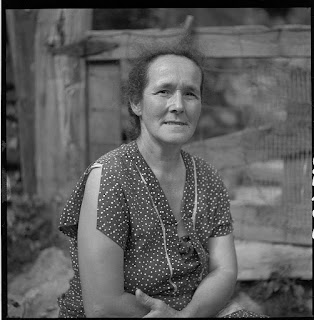Hopkinsville, KY entrepreneur of the early 1900s
Metcalfe Flowers was founded in 1902 by Hopkinsville businessman Thomas Lee Metcalfe (T. L. Metcalfe). Today, the business still operates in its original building on the corner of 7th and Liberty.
In addition to his flower business in Hopkinsville, T. L. Metcalfe had greenhouses at Madisonville, Kentucky, and at Jackson, Clarksville, and Springfield, Tennessee. He also owned and operated the Hopkinsville Steam Laundry and the Avalon, an assembly hall where organizations could hold meetings and luncheons.
Metcalfe published a bi-weekly newspaper in Hopkinsville, as well. The Independent, one of eight newspapers listed for Hopkinsville in the 1899 National Newspaper Directory and Gazetteer, came out on Tuesdays and Fridays, and had a circulation of 1500.
The flower business
Metcalfe's advertisements for floral workers give some insight to the nature of his flower business:
HELP WANTED— A young man assistant to foreman in growing carnations and roses principally; must also be able to do design work and some little outside gardening; wages $10 per week with room and washing: board can be had for $3 per week. Address T. L. Metcalfe, Hopkinsville, Ky. (Source: March 7, 1907, Weekly Florists Review.)
HELP WANTED — At once, a first-class grower of roses, carnations and pot stuff, also a good designer, who can act as working foreman of 35,000 feet of glass; salary $15.00 per week for first year; house furnished and laundry free. Address at once, with reference. T. L. Metcalfe, Hopkinsville, Ky. (Source: March 2, 1911, Florists Review.)The laundry
As owner of the Hopkinsville Steam Laundry, Metcalfe invented and patented a shipping hamper for laundries in 1904. The hamper was designed to "provide a simple, inexpensive, and efficient basket or hamper of great strength and durability designed for use by laundries for shipping clothes and adapted to be conveniently handled without liability of breaking or otherwise injuring it." (Source: Metcalfe's patent drawings and application.)
Citizen of Hopkinsville
T. L. Metcalfe is mentioned several times in Charles Meachem's history of Christian County. Meachem recorded that Metcalfe gave away 1500 carnations to school children as part of Hopkinsville's 1910 celebration of the laying of the cornerstone of the new high school. (This would have been the old Hopkinsville High School on Walnut Street -- a building which has been torn down.)
Meachem also lists T. L. Metcalfe as a member of the Odd Fellows Lodge in Hopkinsville and as a near-winner of a contest in which the number of perfectly-formed seeds in a large pumpkin were guessed.
Also of interest
Mr. Metcalfe was once in a train wreck near Clarksville, Tennessee. He suffered cuts and bruises during the wreck but gathered his senses and rescued three people from the burning cars before escaping himself. Fire consumed the train cars within seven minutes. (Source: March 2, 1911, Florists Review.)
T.L. Metcalfe's father was a minister, and his maternal grandfather, Whitfield Killebrew, was an early settler in Montgomery County, Tennessee.
The Sixth General Catalogue of Sigma Alpha Epsilon records that T. L. Metcalfe was born in 1864 and married Clara Orr in 1895. I do not know the date of T. L. Metcalfe's death.
Researching this entrepreneur
I stopped at Metcalfe Flowers today to ask about its founder, but none of the employees could tell me anything but his name and the date that the business was founded. However, that was enough to find a surprising amount of information about T. L. Metcalfe on the internet.
While researching T. L. Metcalfe tonight, I've felt respect for his spirit of entrepreneurism. He seems to have been a very capable businessman. I think he'd be shocked at all the bail-outs of 2008 and 2009.















